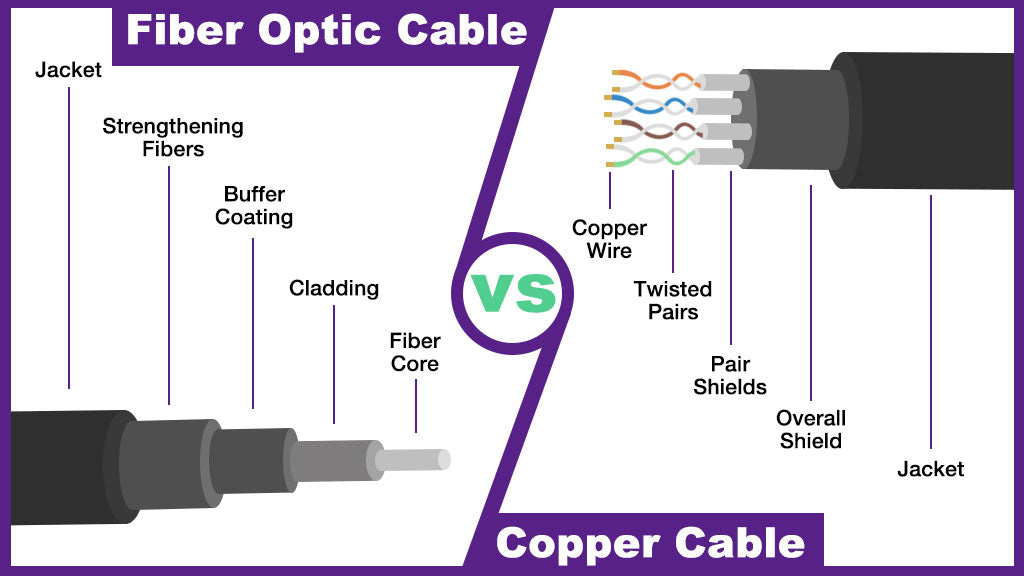HDMI cables are essential for high-quality audiovisual transmission, but choosing between fiber-optic and copper HDMI cables depends on your specific needs. Below is a detailed comparison to guide your decision.
- Copper HDMI Cables:
Constructed with copper wires, these cables transmit electrical signals. They are thicker, less flexible, and prone to electromagnetic interference (EMI) or radio-frequency interference (RFI), especially over long distances. - Fiber Optic HDMI Cables:
Utilize fiber-optic cores and photoelectric conversion chips. Light signals (via lasers) replace electrical currents, enabling faster, interference-free transmission. These cables are thinner, lighter, and more flexible.

| Feature | Copper HDMI | Fiber Optic HDMI |
|---|
| Max Distance | 15–20 meters (4K/8K) | Up to 100 meters (4K/8K) |
| Signal Loss | Significant over 15m | Minimal even at 100m |
| EMI/RFI Resistance | Vulnerable | Immune |
Regular HDMI cables struggle with signal degradation beyond 15 meters, often requiring signal boosters. Directional HDMI maintains 8K@60Hz/48Gbps performance over extended distances without additional hardware.
- Copper HDMI:
Bidirectional—no fixed input/output ends. Plug-and-play flexibility simplifies installation. - Fiber Optic HDMI:
Unidirectional—ends are labeled “Source” (input) and “Display” (output). Incorrect installation disrupts signal flow. However, some models feature detachable connectors (e.g., Micro HDMI) for compatibility with smartphones or tight spaces.
- Durability:
Copper cables are sturdier but bulkier. Fiber-optic cores are fragile; excessive bending or force may damage internal fibers. - Cost:
Regular HDMI is cost-effective (e.g., $10–$30 for 3m). Directional HDMI costs 3–5× more (e.g., $100–$300 for 3–10m), though prices are gradually decreasing.
- Copper HDMI:
Short-distance setups (≤10m), budget-conscious projects, or environments without EMI risks (e.g., home gaming consoles). - Fiber Optic HDMI:
Long-distance installations (e.g., home theaters, conference rooms), EMI-heavy industrial settings, or setups requiring ultra-high resolutions (8K HDR).
Conclusion
Directional HDMI excels in performance and reliability for professional or long-range applications, while regular HDMI remains practical for everyday use. Always verify cable specifications (e.g., HDMI 2.1 certification) and prioritize shielded designs for critical setups.
FAQ
Q1: Can directional HDMI cables be used interchangeably with regular HDMI cables?
No. Directional HDMI cables (typically fiber optic) have a specific signal path from “source” to “display” due to their internal design. Reversing the direction may disrupt signal transmission. Regular HDMI cables (copper-based) are bidirectional and work in any orientation.
Q2: When should I choose a directional HDMI cable over a regular one?
Opt for directional cables in scenarios requiring:
- Long-distance signal transmission (15+ meters) without signal degradation.
- High-bandwidth applications (e.g., 8K/60Hz, HDR, or Dolby Atmos).
- Electromagnetic interference-prone environments (e.g., near power cables).
Q3: Do directional HDMI cables require special equipment or setup?
No external adapters are needed, but ensure the cable is correctly oriented:
- Labeled “source” end connects to devices like gaming consoles or Blu-ray players.
- Labeled “display” end connects to TVs, projectors, or monitors.
Q4: Are directional HDMI cables more expensive than regular ones?
Yes. Fiber optic directional cables cost 2–3 times more than copper-based regular HDMI cables due to advanced materials and manufacturing. However, they offer superior performance for professional or high-end home theater setups.

Comments
Post a Comment